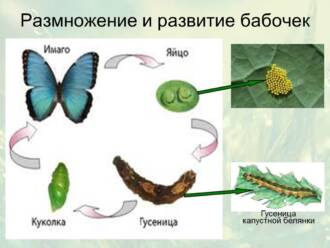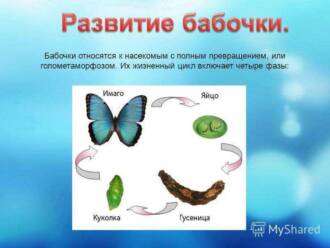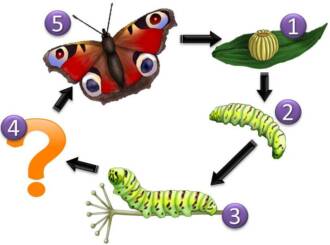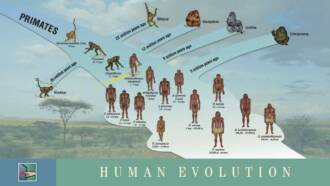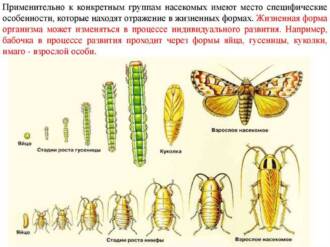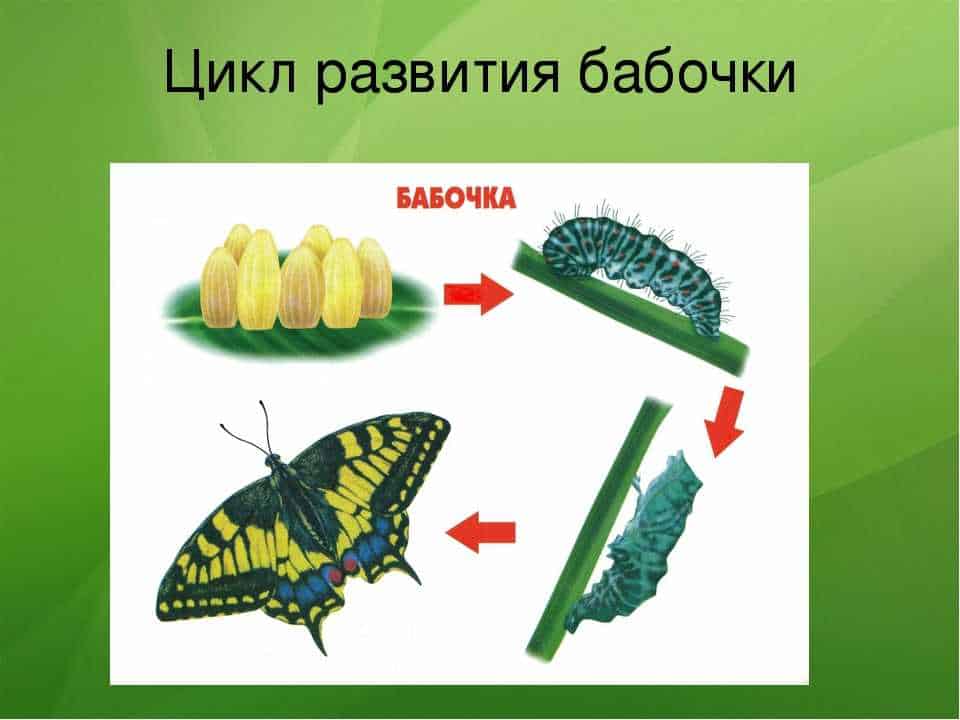
Butterflies are one of the most famous and beautiful insects that go through an amazing transformation during their life. Their life cycle consists of several phases, each of which is unique and exciting.
It all starts with an egg that the female lays on the plant. Butterfly eggs are usually very small and come in a variety of shapes and colors. They can be oval, round or even elongated. When the egg hatches, a hungry caterpillar emerges from it - the next phase of the life cycle.
Caterpillars are active and appetizing creatures that constantly feed on plants to gain strength for further development. They grow very fast and go through several molts when their old skin is to increase their size. Caterpillars can have different colors and patterns that help them hide from predators.
When the caterpillar reaches a certain size, it turns into a chrysalis - this is the most amazing phase of the butterfly life cycle. The pupa usually has a protective shell that allows it to develop safely inside. Amazing transformations take place inside the chrysalis, and after a while an adult butterfly hatches out of it - an insect that can fly and reproduce.
Butterfly development phases: from egg to insect
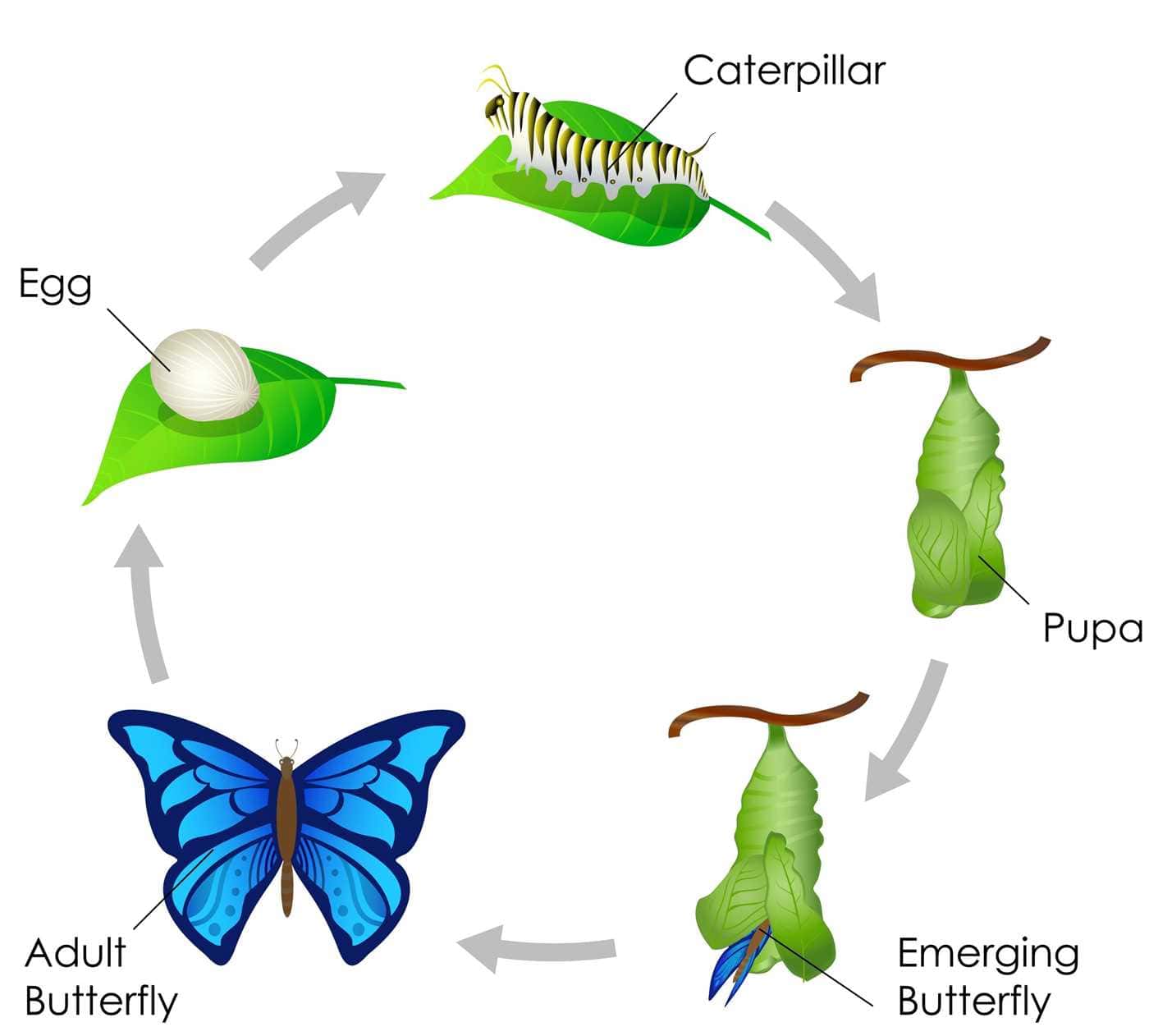
The life cycle of butterflies goes through several phases of development, each of which has its own characteristics and duration. The stages of development of butterflies begin from the moment of laying eggs and end with the transformation into a full-fledged insect.
1. Egg
The first stage of butterfly development is the egg. The female lays eggs on various plants, which will serve as a future food source for the caterpillars. Butterfly eggs usually have a variety of shapes and colors, which help them camouflage themselves among plants and avoid predators. Depending on the type of butterfly, the period of egg development can last from several days to several weeks.
2. Caterpillar
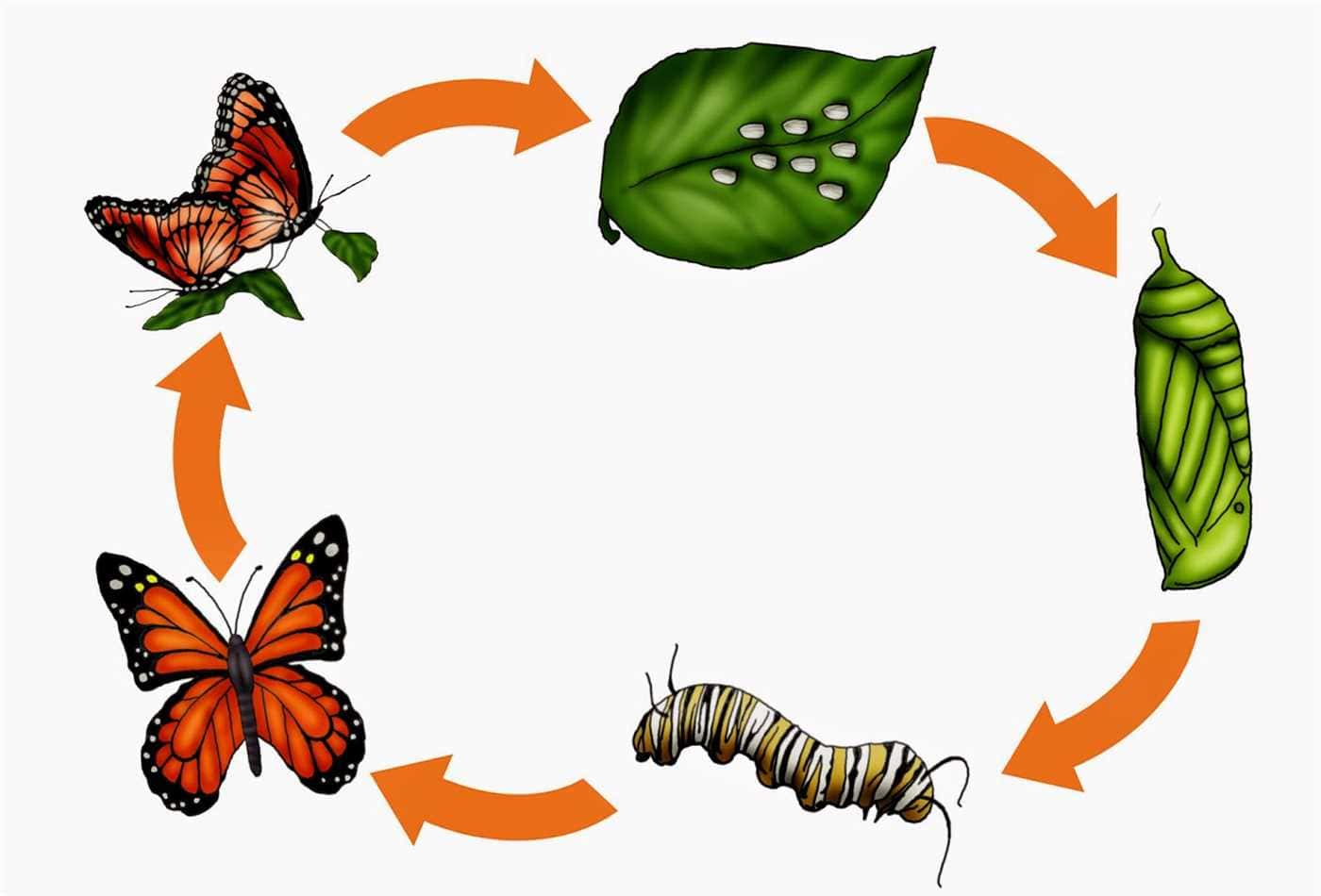
After hatching from the egg, butterflies go through the second stage of development - the caterpillar. Caterpillars actively feed on plant food and grow quickly. They go through several molts, when their old skin is replaced with a new one, more suitable for growth. Caterpillars can have different colors and shapes, which helps them to camouflage themselves on their plant food. The period during which the caterpillar is at this stage of development can last from several weeks to several months.
3. Pupa
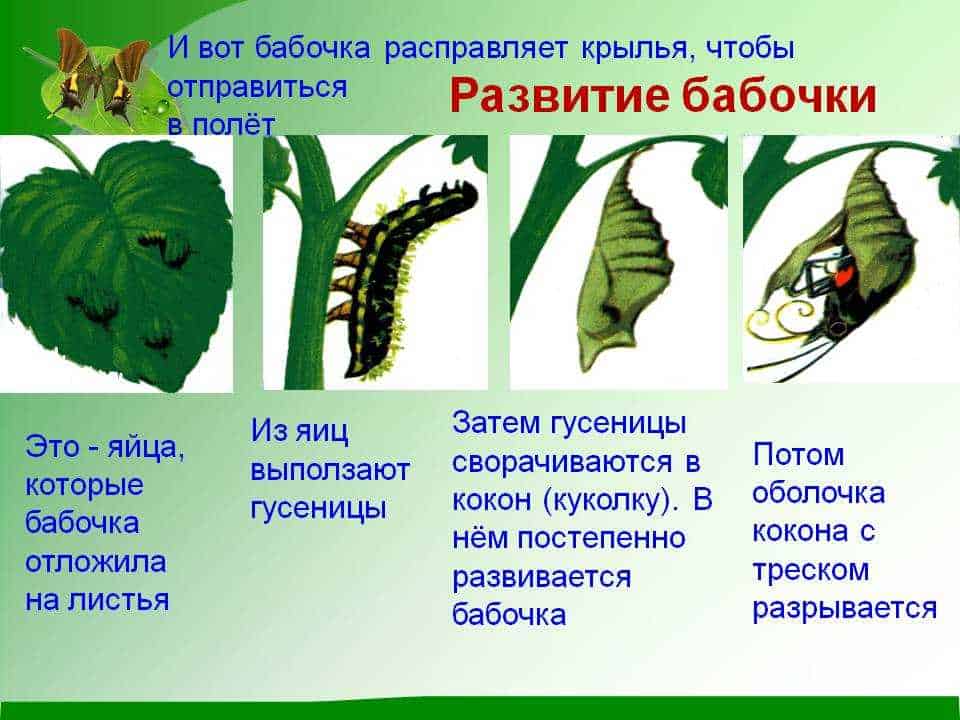
The third phase of butterfly development is the pupa. The caterpillar enters the pupa state, when it turns into a motionless insect. Complex transformation processes occur inside the pupa, resulting in the formation of a new organism - the future butterfly. The pupa can have different shapes, colors and textures that help it hide from predators. The duration of this phase of development can also vary depending on the type of butterfly - from several days to several months.
4. Insect
After completion of the transformation process in the chrysalis, the butterfly emerges into the light in the form of a full-fledged insect. In this phase of butterfly development, they acquire their final shape and color. They have wings with which they can fly and search for food. Adult butterflies also play an important role in plant pollination. The lifespan of butterflies can vary from a few days to several weeks, depending on the species and environmental conditions.
Egg as the first stage of development
The egg is the first stage in the development of butterflies. It is a small round or oval shape, usually white or yellow. Butterfly eggs can be of different sizes, depending on the species.
Butterfly eggs are usually laid on plants that are food sources for the caterpillars. Egg-laying sites can be varied - leaves, stems, flowers or even the ground. Some butterfly species lay eggs en masse, while others prefer to lay one egg at a time on specific plants.
The appearance of the egg may vary. It can be smooth or have small protrusions and tubercles. Some eggs are brightly colored to help them hide among the leaves and prevent them from being eaten by predators. Other eggs may be transparent or translucent, allowing internal organs to develop inside them.
The incubation period for butterfly eggs can vary depending on the species and environmental conditions. This usually takes from a few days to a few weeks. During this time, an embryo develops inside the egg, and eventually a hungry caterpillar hatches from the egg, ready to eat plants.
Larva as the second phase of development
After the butterfly lays eggs, the second phase of its life cycle begins - the larval phase. The larva is a small insect that hatches from the egg. It looks completely different from the adult butterfly and has its own characteristics.
The larva does not have wings like an adult butterfly. It usually has a small body and long legs. Her body may be covered with hairs or spikes. The larva often has a bright color or multi-colored stripes, which helps it to hide from predators or frighten them. It may also have special organs or appendages that help it move or defend itself.
The larva is not able to fly, it spends most of its time looking for food. It feeds on plant materials, usually plant leaves. The larva is constantly growing and developing, and in order to maintain its growth, it constantly eats a large amount of food.
The larva remains in this phase for several weeks or months, depending on the species of butterfly. After the larva has completed its growth, it prepares for the next phase of development - the pupa phase.
Perepon as the third stage of development

The membrane is the third stage in the development of butterflies, which occurs after hatching from the egg. At this stage, the butterfly is in the form of a caterpillar and continues to actively grow and develop.
During the period of membrane development of the caterpillar, significant changes occur. It becomes bigger and stronger, acquiring the characteristic features of a future butterfly. The caterpillar actively feeds, eating vegetation and accumulating energy for further development.
At this stage, special attention is paid to the growth and strengthening of the membranes. The membranes are special structures on the body of the caterpillar, which will then become the wings of a butterfly. The caterpillar actively develops its membranes, strengthening them and giving them the desired shape.
Webbed development is a very important stage in the life cycle of butterflies. It is thanks to the development of the membranes that the caterpillar turns into a beautiful and light butterfly. After completing this stage, the caterpillar is ready for the next stage of its development - the chrysalis.
Pupa as the fourth phase of development
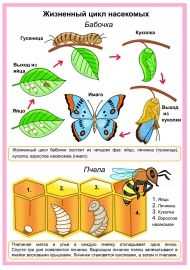
The pupa is the fourth stage of butterfly development, following the caterpillar stage. After the caterpillar has gone through its three stages of growth, it turns into a pupa.
The pupa is a motionless state in which important changes occur inside the butterfly's body. Externally, the pupa may look like a small transparent shell or like a cocoon, depending on the type of butterfly. Inside the pupa, the process of metamorphosis occurs, in which the caterpillar turns into an adult butterfly.
The process of turning into a chrysalis takes a certain time, which can be different for different types of butterflies. Complex processes take place inside the pupa, including the destruction and reorganization of tissues, the formation of wings and other organs necessary for the flight and survival of an adult butterfly.
After completion of the process of metamorphosis, the pupa opens, and an adult butterfly flies out of it. This phenomenon is called eclosion. The adult moth usually leaves the empty chrysalis behind and it remains on the plant or other surface.
The pupa is a very important stage in the life cycle of butterflies. The health and survival of the future butterfly depends on the correct development of the pupa. Therefore, the protection of pupae and their natural environment is one of the measures to preserve the diversity of butterflies in nature.
The worm as the fifth stage of development
The worm is the fifth stage in the development of butterflies, which is called the larva or caterpillar. After hatching from the egg, the butterfly stays in this stage for several weeks or months, depending on the species.
The caterpillar is a long and soft body, consisting of several segments. It actively feeds on vegetation in order to gain enough nutrients for its future development. The caterpillar also grows in size and periodically molts to renew its appearance.
It is important to note that the caterpillar cannot fly, unlike the adult butterfly. She moves by crawling on her legs or with the help of threads that are released from her body and attached to the surface. These threads are called silk threads and are used to create a cocoon in the next stage of development.
The caterpillar also goes through several lines of development, as a result of which its body becomes more complex and diverse. It may have bright colors or spikes that serve as a defense against predators. The caterpillar actively explores its environment, eating and adapting to various conditions.
Insect as the sixth phase of development
After passing through the previous five phases of development, the butterfly reaches the last, sixth phase - the insect. In this phase, the butterfly completely transforms from a larva to an adult insect.
During this phase, the butterfly emerges from the chrysalis and unfolds its wings, which were previously folded. Butterfly wings are usually colorful and decorated with a variety of patterns and patterns. They serve to attract the attention of other individuals and to protect against predators.
The insect, or adult butterfly, has two pairs of wings, six legs, and a pair of antennae. The antennae of the butterfly are a sense organ and help her find food and a mate. Butterflies have sharp eyes and good eyesight, allowing them to detect flowers and other insects over long distances.
Adult butterflies usually feed on the nectar of flowers. They use their long mouthparts, called nipples, to extract nectar from the flower. Butterflies can also drink moisture and juices from fruits or rotten plants.
Metamorphosis as a process of transformation
Transformation from egg to caterpillar
The life cycle of butterflies begins with an egg, which is laid by the female on plants. A hungry caterpillar hatches from the egg, which immediately begins to feed on the leaves. The caterpillar grows and develops, passing through several stages of its development, called larvae.
During its development, the caterpillar actively feeds in order to gain sufficient energy for the next phase of its life. When the caterpillar reaches a certain size, it enters the next phase of metamorphosis.
Transformation from caterpillar to chrysalis
Like a miracle, the caterpillar turns into a chrysalis. She begins to weave her protective thread and attaches herself to a branch or other suitable surface. Then the caterpillar forms a chrysalis, inside which amazing transformations take place.
Inside the pupa, the caterpillar's body undergoes a complete reorganization. It turns into an imago - an adult insect. At this time, complex growth and development processes occur, when the caterpillar turns into a colorful butterfly.
Transformation from chrysalis to butterfly
When the process of metamorphosis is completed, the butterfly is ready to fly out of the chrysalis. She punches a hole for herself and leans out of it. The first time after departure, the butterfly is soft and its wings are folded. They are necessary in order to dock to the chrysalis and pump blood into the veins of the wings.
Gradually, the wings of the butterfly dry out and straighten out. The butterfly is ready for its first flight. With open wings, the butterfly can show its beauty and fly away in search of food and new adventures.
Food preferences in different developmental phases
Butterfly life cycle phases include several stages of development: egg, caterpillar, pupa and adult insect. Each of these phases has its own characteristics and food preferences.
Egg
Butterfly eggs are usually laid on plants that will serve as food for future caterpillars. Different types of butterflies can lay their eggs on different plants. Some butterflies prefer to lay on certain types of plants, as they contain the necessary nutrients for the development of eggs and caterpillars. The eggs are usually small and come in a variety of shapes and colors.
Caterpillar
Caterpillars are the most active phase of butterfly development. They have a large appetite and constantly eat plant foods. Each species of butterfly has its own preference for the plants they eat. Caterpillars can feed on leaves, stems, flowers and fruits of plants. They may also be specialized and feed only on certain types of plants.
chrysalis
The pupa is the stage in which the caterpillar transforms into a butterfly. They do not consume food during this stage. The pupa is usually found in a sheltered place, such as tree branches or leaves, to be protected from predators. Metamorphosis occurs inside the pupa, and the caterpillar transforms into a butterfly.
adult insect

When a butterfly hatches from a chrysalis, it becomes an adult insect. Adult butterflies feed on the nectar of flowers. They use their long mouthparts, called proboscis, to extract nectar from the flower. The nectar contains sugars that provide energy for the butterfly. Some species of butterflies can also feed on other fluids such as fruit juices or even animal blood.
The influence of the environment on the development of butterflies
The environment plays an important role in the development of butterflies. Each phase of their life cycle depends on certain conditions that the environment provides.
Eggs
Butterfly eggs are laid on various plants. The influence of the environment on this phase is that the plants must provide suitable food for future caterpillars. It is also important that the eggs are protected from predators and adverse weather conditions.
caterpillars
Caterpillars are the most active and nutritious phase in the life cycle of butterflies. Their development depends on the quality of the food they consume. The plants on which the caterpillars feed must contain the necessary nutrients and be safe from poisonous substances. Also, the environment must provide protection from predators and provide suitable conditions for the growth and development of caterpillars.
chrysalis
The pupa is the stage when the caterpillar turns into a butterfly. The environment must provide a safe place for the chrysalis to rest in peace and undergo the process of metamorphosis. It is also important that the surrounding world provides the necessary conditions for the formation and development of the butterfly inside the chrysalis.
Thus, the environment has a huge impact on the development of butterflies. It must provide suitable food, protection from predators and adverse weather conditions, and provide the necessary conditions for the metamorphosis and development of butterflies.

